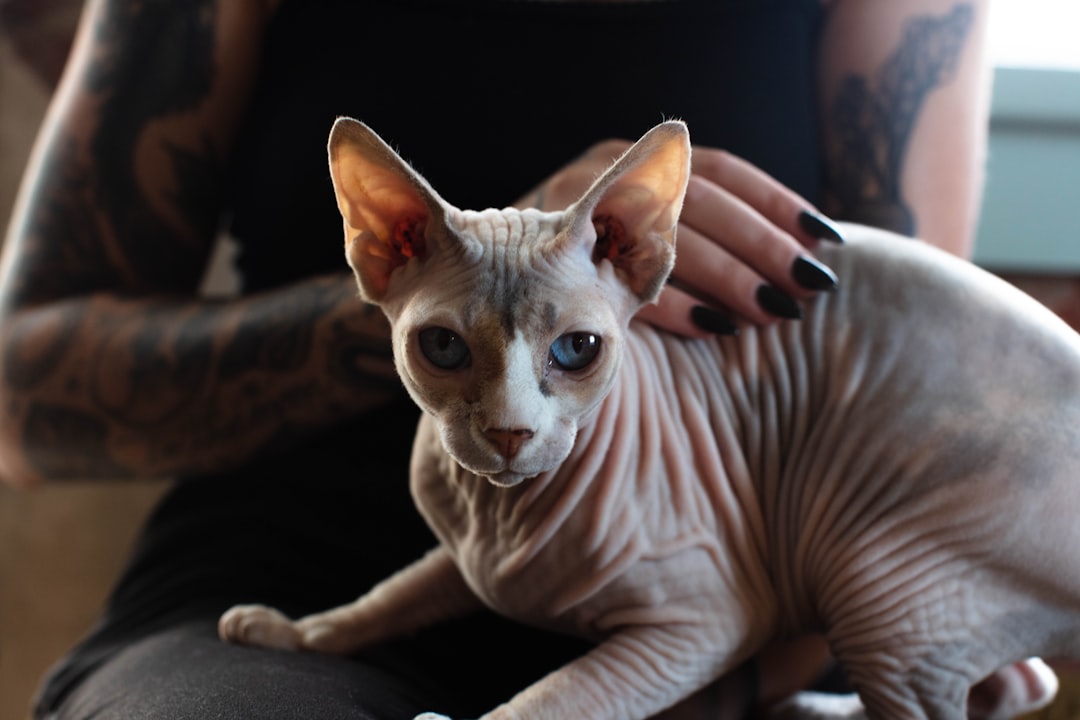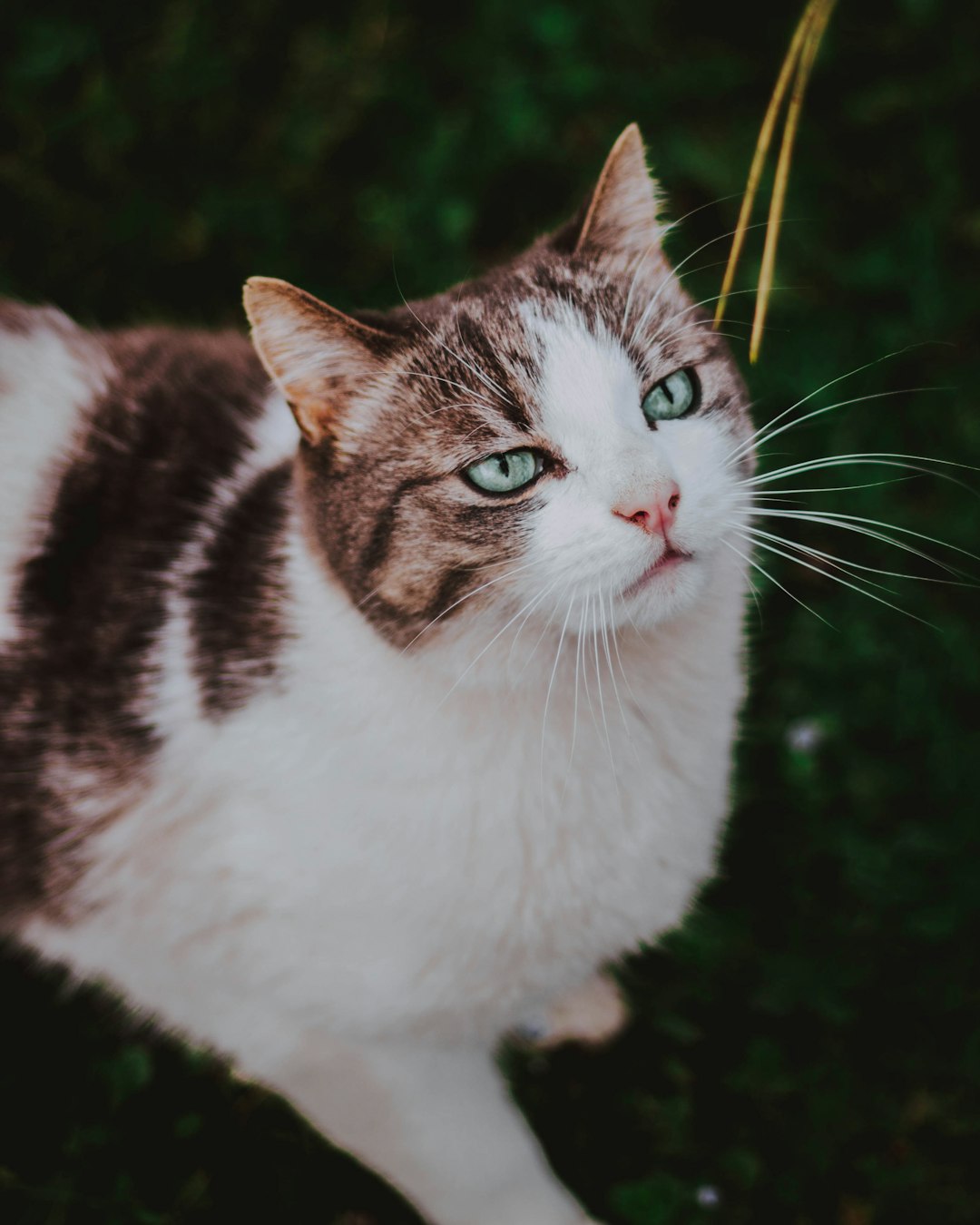Curiosity often leads cat owners to wonder about their feline companions’ dietary preferences, especially when it comes to the intriguing question: Can cats taste spicy? While humans may enjoy the thrill of spicy flavors, cats have a unique physiology that significantly influences their taste buds. In this blog post, we will explore the fascinating world of feline taste perception, uncover the science behind spicy foods, and debunk common myths surrounding cats and spiciness. By understanding what flavors appeal to our cats and which ones can pose health risks, cat owners can make informed decisions about their pets’ diets. Join us as we delve into the intricate relationship between cats and taste, ensuring that your furry friend enjoys a safe and satisfying culinary experience.
Understanding Feline Taste Buds
An Overview of Cat Taste Buds
Cats, known for their discerning palates, have a unique setup when it comes to taste. Unlike humans who possess approximately 9,000 taste buds, cats only have around 470. This significantly lower number influences their flavor preferences and dietary choices. Interestingly, these taste buds are primarily tuned for proteins and amino acids, reflecting their carnivorous nature.
How Cats’ Taste Buds Differ from Humans
When examining how cats perceive flavors, it’s crucial to highlight their distinctive adaptations. Feline taste buds are specifically designed to detect certain compounds:
| Flavor Type | Cats’ Sensitivity | Humans’ Sensitivity |
|---|---|---|
| Sweet | Limited | High |
| Bitter | Moderate | High |
| Sour | Moderate | High |
| Umami (savory) | High | Moderate |
| Spicy | None | Low |
As shown above, cats lack the ability to taste sweet flavors. This evolutionary trait suggests that sweets played little to no role in their natural diet, primarily consisting of meat and proteins.
The Role of Taste in a Cat’s Diet
Taste plays a vital role in a cat’s eating habits. Felines rely on their taste buds not only for enjoying meals but also for recognizing and distinguishing different types of food. The preference for high-protein diets is evident, as their taste buds have evolved to favor certain amino acids that help maintain their energy levels and overall health. While the question arises — can cats taste spicy? — the answer is they simply do not possess the receptors to detect spiciness, steering them clear of those flavors in the wild. Understanding these intricacies aids cat owners in providing better dietary choices attuned to their pets’ needs.
The Science Behind Spicy Foods
What Makes Food Spicy?
Spiciness in foods primarily originates from compounds called capsaicinoids, the most famous of which is capsaicin. These chemical compounds are found predominantly in chili peppers and are responsible for that distinctive burning sensation associated with spicy foods. When humans consume spicy food, capsaicin binds to pain receptors in the mouth, tricking the brain into perceiving heat without any actual temperature increase.
The Chemistry of Spiciness
The sensation of spiciness occurs through the activation of specific pain receptors, known as TRPV1 receptors. When capsaicin interacts with these receptors, it sends signals to the brain that are interpreted as pain and heat. This process involves several chemical reactions that not only stimulate these receptors but also encourage the release of endorphins, which can contribute to a feeling of euphoria in spicy food enthusiasts.
| Component | Function |
|---|---|
| Capsaicin | Activates pain receptors |
| TRPV1 Receptors | Transmit heat sensation to the brain |
| Endorphins | Provide a sense of pleasure |
Common Spicy Ingredients in Human Diets
Many everyday foods contain significant amounts of capsaicin, making them popular in various cuisines worldwide. Here are a few common examples:
| Ingredient | Cuisine |
|---|---|
| Jalapeños | Mexican |
| Sriracha sauce | Thai |
| Red pepper flakes | Italian |
| Wasabi | Japanese |
These ingredients are often used to enhance flavor profiles in dishes, providing not only heat but also complex layers of taste that can delight palates. Understanding how these components work is essential, especially when considering whether can cats taste spicy?, as cats experience flavor perception quite differently than humans.
Do Cats Have the Receptors for Spiciness?
Exploring the Lack of Specific Receptors
Cats, unlike humans, lack the specific receptors responsible for detecting spiciness, particularly the TRPV1 receptor. This receptor plays a crucial role in how humans perceive spicy flavors, especially those derived from sources like chili peppers. Instead, cats possess a different set of taste receptors, primarily geared toward detecting amino acids and the sweetness of certain foods, such as fish or meat. Thus, while cats may interact with spiciness through smell or texture, their inability to perceive heat or spiciness means they are not naturally inclined to enjoy these flavors.
Comparison with Other Animals
| Animal | Spicy Receptor Presence | Taste Preferences |
|---|---|---|
| Cats | No | High protein, low carb |
| Dogs | Limited | Varied, prefers meats and fats |
| Humans | Yes | Enjoy spices, heat, diversity |
| Rodents | Yes | Avoid very spicy food |
This table highlights the significant differences regarding taste receptors among various species. While dogs have a minimal presence of spicy receptors, humans are known for their appreciation of spicy foods. Cats, in contrast, remain indifferent to such culinary pleasures.
Implications for Cat Health
The absence of spicy receptors in cats brings about important considerations for cat health. Offering spicy foods can lead to gastrointestinal discomfort, as cats are more susceptible to the irritants found in spicy ingredients. Moreover, feeding cats food that is not suitable for their digestive systems may contribute to health issues such as vomiting or diarrhea. Therefore, while curiosity may tempt cat owners to let their pets sample spicy dishes, it’s vital to prioritize a proper diet suited to feline biology. In summary, can cats taste spicy? The answer remains a definitive no, affirming the importance of providing diets aligned with their unique taste preferences and physiological needs.
Cats and the Perception of Flavor
Cats possess a unique way of perceiving flavors that sets them apart from other animals, including humans. Understanding this perception can deepen our appreciation for these fascinating companions.
Sweet vs. Savory: What Cats Prefer
Interestingly, cats are obligate carnivores, meaning their natural diet consists primarily of meat. Consequently, they have an aversion to sweet flavors. Research indicates that cats lack the genetic makeup to taste sugar effectively. Instead, cats prefer savory flavors, primarily through the protein found in meats. This preference highlights their evolutionary adaptations and nutritional needs.
| Flavor Type | Preference Level |
|---|---|
| Sweet | Low |
| Savory | High |
| Bitter | Moderate |
The Importance of Smell in Taste
For felines, the sense of smell significantly enhances their experience of taste. In fact, a cat’s sense of smell is exponentially better than that of humans. While they might not taste spicy foods in the same way we do, the aroma plays a crucial role in their eating habits. When food aroma is appealing, it can entice cats to consume their meals—even if the flavor isn’t as pronounced as it is for humans.
How Texture Influences Feline Eating Habits
Another essential factor affecting the way cats perceive flavor is texture. Cats may exhibit preferences for specific textures, such as crunchy kibble versus moist canned food. This variation can impact their enjoyment and willingness to eat different types of food.
| Texture Type | Preference Level |
|---|---|
| Soft | High |
| Crunchy | Moderate |
| No Preference | Low |
In essence, while can cats taste spicy? remains a question of culinary interest, their perception of flavor relies heavily on savory tastes, smell, and texture, shaping their unique feline eating habits.
What Happens When Cats Ingest Spicy Foods?
Immediate Reactions to Spicy Foods
When cats ingest spicy foods, their immediate reactions can be quite noticeable. Unlike humans, who might enjoy the heat, felines experience discomfort. You may observe a range of behaviors such as:
| Reaction Type | Description |
|---|---|
| Facial Expressions | Cats may show signs of distress, such as flared nostrils or an open mouth. |
| Vocalizations | Increased meowing or hissing due to irritation. |
| Physical Reactions | Excessive licking of lips or pawing at the mouth. |
These reactions indicate that spicy foods are not well-tolerated by our furry friends.
Potential Health Risks
Ingesting spicy foods presents several potential health risks for cats:
| Risk Factor | Explanation |
|---|---|
| Gastrointestinal Upset | Spices can lead to nausea, vomiting, and diarrhea. |
| Irritation | Ingredients like chili can irritate the mucus membranes, causing pain or discomfort. |
| Toxins | In some cases, certain spicy foods can contain harmful ingredients like garlic or onions. |
These risks underscore the importance of keeping spicy foods away from cats’ diets.
Long-term Effects of Spicy Food Consumption
While immediate reactions are critical to monitor, long-term consumption of spicy foods can lead to chronic issues:
| Long-term Effect | Description |
|---|---|
| Digestive Issues | Regularly consuming spicy foods may disrupt digestive health, leading to ongoing discomfort. |
| Behavioral Changes | Cats may develop aversions to food or display anxiety around mealtime. |
| Nutritional Deficiencies | Spicy foods could replace more nutritious options, leading to health problems. |
Understanding can cats taste spicy? will further clarify why these foods are not suitable for their diets, reinforcing that their taste receptors are ill-equipped to handle such intense flavors.
Common Myths About Cats and Spicy Food
Debunking Misconceptions
When it comes to can cats taste spicy?, many myths have sprouted over the years. One prevalent misconception is that cats can enjoy spicy foods like humans. In reality, feline taste buds do not possess the receptor genes required to perceive spiciness. The sensation of spiciness, derived from capsaicin found in peppers, is not something cats can taste. Thus, any assumptions about their enjoyment of such foods are unfounded.
| Myth | Truth |
|---|---|
| Cats love spicy food | Cats cannot taste spiciness due to lacking receptors. |
| Spicy food is beneficial | Spicy food can harm cats and cause digestive issues. |
Cultural Beliefs Surrounding Cats and Spice
Cultural beliefs regarding felines often glamorize their appeal to a variety of flavors, including spicy tastes. Some cultures believe that certain spicy dishes might enhance a cat’s health or longevity. However, these beliefs lack scientific backing. Instead, they can lead to unsafe feeding practices that may jeopardize a cat’s health.
Misinformation in Pet Care
Misinformation often comes from anecdotal experiences shared among pet owners. Scenarios where one cat seemingly “enjoys” a spicy bite may not be indicative of general feline behavior. Rather, it could be an isolated incident attributed to a curious cat. Therefore, educating pet owners about the potential dangers is paramount.
In summary, understanding the realities surrounding can cats taste spicy? helps dispel myths and nurture a responsible approach to feline diets, steering clear of potentially harmful foods.
What Foods Are Safe for Cats?
Understanding Cat Dietary Needs
Cats are obligate carnivores, meaning their diet primarily consists of protein derived from animal sources. They require specific nutrients such as taurine, arachidonic acid, and vitamin A, which they cannot produce on their own. A balanced diet for cats should focus on these essential nutrients, along with adequate hydration.
| Nutrient | Importance |
|---|---|
| Taurine | Supports heart and eye health |
| Arachidonic Acid | Essential for skin and coat |
| Vitamin A | Crucial for vision and immune health |
Safe Human Foods for Cats
While most of a cat’s diet should come from high-quality cat food, certain human foods can be safe in moderation. Here’s a quick guide:
| Food | Safe or Not | Notes |
|---|---|---|
| Cooked Chicken | Safe | Remove skin and bones. |
| Plain Rice | Safe | A good source of energy, but not a necessity. |
| Pumpkin | Safe | Helps with digestion; use plain, cooked pumpkin. |
| Fish | Safe | Offer in moderation; avoid raw fish. |
| Dairy | Not Safe | Many cats are lactose intolerant. |
Avoiding Toxic Foods
Certain human foods pose significant health risks to cats and should be entirely avoided:
| Toxic Food | Effects on Cats |
|---|---|
| Onions & Garlic | Can cause anemia |
| Chocolate | May lead to heart issues |
| Grapes & Raisins | Can cause kidney failure |
| Alcohol | Highly toxic; can be fatal |
By understanding what foods are safe and dangerous for your feline friend, you can ensure a healthy, balanced diet that keeps them happy and thriving. Always consult with your veterinarian before introducing new foods into your cat’s diet, as they can provide tailored advice based on your pet’s individual needs.
Advising Cat Owners on Feeding Practices
Feeding your feline friend requires careful attention to their dietary needs and preferences. Understanding how to properly introduce new foods and the importance of monitoring their reactions can significantly enhance your cat’s eating experience.
How to Introduce New Foods
Introducing new foods to your cat should be a gradual process to avoid gastrointestinal upset. Here’s how to do it effectively:
| Step | Action | Purpose |
|---|---|---|
| 1 | Start with a small portion | To monitor their initial reaction |
| 2 | Mix the new food with existing food | Familiarizes them with the new taste |
| 3 | Observe over several days | Detect any potential digestive issues |
Recognizing Signs of Allergic Reactions
When introducing any new items to your cat’s diet, it’s crucial to be vigilant for potential allergic reactions. Common signs include:
- Itching and Scratching: Excessive grooming or skin irritation
- Vomiting or Diarrhea: Changes in bowel movements or appetite
- Swelling or Hives: Red patches or bumps on the skin
If you notice these signs, promptly remove the new food from their diet and consult your veterinarian.
Consulting with Veterinarians
For optimal nutrition, consulting a veterinarian is invaluable. They can offer personalized advice based on your cat’s age, weight, and health conditions. It’s particularly important to discuss any new foods you wish to introduce, as they can provide insight on safe options and portion sizes to prevent dietary mishaps.
In summary, being meticulous about how you introduce new foods, recognizing allergic reactions, and seeking professional advice ensures your cat’s diet remains both safe and enjoyable.
The Role of Spicy Foods in Human Diet
Cultural Significance of Spice
Spicy foods play a pivotal role in various cultures around the world. In places like India, Mexico, and Thailand, the use of spices isn’t merely a culinary choice; it’s a tradition deeply embedded in cultural practices. Spicy ingredients such as chili peppers, black pepper, and ginger are essential in not just elevating flavor but also creating a sense of warmth and community during shared meals.
Health Benefits of Spicy Foods
In addition to flavor, spicy foods come with a plethora of health benefits:
| Benefit | Description |
|---|---|
| Boosts Metabolism | Spicy foods can help increase metabolism through compounds like capsaicin. |
| Pain Relief | Capsaicin is known for its pain-relieving properties, often used in topical ointments. |
| Improves Digestion | Spices can stimulate digestive enzymes, aiding in healthier digestion. |
| Heart Health | Regular consumption of certain spicy foods may contribute to lower blood pressure and heart disease risk. |
Comparative Diets: Humans vs. Cats
It’s crucial to understand the vast differences in taste perception between humans and cats. While cats have a unique diet primarily focused on protein, spices that can be enjoyable for humans often do not appeal to cats. Humans embrace the heat from spicy foods, while cats lack specific receptors necessary to enjoy these sensations.
This stark difference highlights why spices are a staple in human dining yet remain absent from a cat’s natural diet. Consequently, cat owners should prioritize their cats’ health by steering clear of spicy foods, contrasting the diverse and rich flavors that humans enjoy.
Further Research on Feline Taste Preferences
Current Studies in Animal Taste Perception
Recent studies have delved into understanding how cats perceive flavors and the factors influencing their dietary choices. Research indicates that domestic cats have a uniquely adapted taste system, primarily driven by their carnivorous nature. A significant focus has been placed on how their taste buds react to not only nutrients but also other sensory inputs. Here’s a summary of recent findings:
| Study Focus | Findings |
|---|---|
| Taste Receptors | Cats lack the sweet taste receptors found in many animals. |
| Umami Sensitivity | Cats possess a strong sensitivity to umami, aiding their preference for protein. |
| Variety of Flavors | They exhibit less interest in complex flavors compared to humans. |
Future Directions for Feline Nutrition Research
As researchers continue to explore feline taste preferences, several future avenues look promising. Investigating how domestication and breeding have altered taste perception could yield interesting insights. Moreover, a detailed examination of the effects of various food textures on palatability and preference is becoming increasingly vital. This could involve:
- Sensory Testing: Developing more interactive taste tests to evaluate feline reactions.
- Age Considerations: Understanding how age affects taste sensitivity in cats.
- Dietary Preferences: Researching the relationship between taste preferences and overall health outcomes.
The Importance of Understanding Cats’ Tastes
Understanding feline taste preferences is crucial not only for pet owners but also for veterinarians and pet food manufacturers. By recognizing which flavors appeal to cats, brands can create more palatable and nutritious products, enhancing overall feline health. An appreciation for these preferences also fosters a better bond between cats and their owners, as knowing what entices a cat’s taste can lead to more enjoyable feeding experiences. Thus, can cats taste spicy? remains a compelling question that emphasizes the need for ongoing research in feline gustatory science.
Frequently Asked Questions
Can cats taste spiciness in foods?
Cats have a different taste bud configuration compared to humans, which limits their ability to perceive spiciness. They lack the receptors that respond to capsaicin, the compound responsible for the heat in spicy foods. Therefore, while they may experience the sensation of spicy foods to some extent, they do not enjoy or seek it out like humans do. Instead, cats are more attracted to flavors such as meat and fish.
What flavors do cats prefer?
Cats generally prefer flavors that mimic their natural prey. This includes savory tastes, especially those found in meat and fish. Their taste buds are highly sensitive to amino acids, which are abundant in animal proteins. Unlike humans who enjoy a variety of flavors including sweetness, cats have a limited sweet receptor, thus they do not prefer sweet tastes and are more likely to stick to umami flavors.
Are spicy foods harmful to cats?
Yes, spicy foods can be harmful to cats. Their digestive systems are not designed to handle the strong chemicals in spicy foods, which can lead to gastrointestinal upset. This may include symptoms such as vomiting, diarrhea, or abdominal pain. It’s essential to stick to cat-friendly diets to ensure their health and well-being and avoid offering them spicy or heavily seasoned foods.
Can cats eat food that contains spice?
Over time, exposure to spices may cause discomfort for cats rather than any pleasurable taste experience. While a small amount of mild spice may not be directly harmful, it can lead to a range of gastrointestinal issues. It is better to avoid giving cats any human food that contains spices to prevent any potential adverse reactions and to maintain a balanced diet that meets their nutritional needs.
Do cats have any taste buds that humans don’t?
Cats possess unique taste buds that are tailored to their carnivorous diet. They have a significant number of taste receptors for savory and umami flavors but notably less for sugar. Unlike humans who have developed a taste for a broad array of flavors, cats’ taste buds have evolved to favor the proteins and fats found in meat. This distinction highlights their dietary needs and preferences as obligate carnivores.



